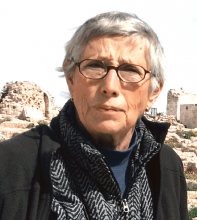You are here
Israel’s campaign to erase Gaza’s memory
Mar 20,2024 - Last updated at Mar 20,2024
Israel has not only slain more than 32,000 Gazans, robbing the narrow coastal strip of men, women and children who had consigned their lives and their futures to never-ending hostile occupation, but Israel has also stolen from Gazans literacy, academic and cultural life, proofs of their ownership of Palestine, and more than 4,000 years of history.
The National based in Abu Dhabi quoted Youssef Salam of Euro-Med Human Rights Monitor as saying, “It’s clear from the beginning of this military operation that the Israeli army had a plan to strategically strike all educational facilities.”
least 280 government schools and 65 UNRWA schools have been flattened or damaged and 133 schools are sheltering displaced families. The 67 private schools have not been spared. More than 625,000 children are not in school and are deprived of lessons in reading, writing, and arithmetic. In 2020, the literacy rate in Gaza was 97.5 per cent and rising.
All Gaza’s 12 universities have been either destroyed or severely damaged and three-quarters of its educational infrastructure has been damaged, the UN has reported. More than 95 university professors have been killed and thousands of students and hundreds of teachers have been slain. Their absence deprives Gazans of higher education, of doctors, dentists, economists, historians, archaeologists, poets, painters, and professors of art and literature. The intention is to turn Gazans into unskilled, semi-skilled ad skilled labourers to work in low paying jobs in Israel.
Israel warplanes also bombed Gaza City’s public library, central archives and the Rashad Shawwa Cultural Centre. Its theatre and its library have been destroyed. Researchers seeking to document life in Gaza have been deprived of official records and books while students from crowded homes no longer have quiet places to study and read. Gazans can no longer attend theatrical productions or concerts.
Israel has pillaged Palestinian private, public libraries and archives since its war of establishment in 1948. I would like to cite two examples of the seizure of highly significant documents and files from two key Palestinian institutions. Israel’s aim is to deprive Palestinians of access to documents on land ownership as well as books on their history, distinctive national culture and socio-economic development. This endeavour erases Gaza’s memory.
Ahead of Israel’s 1982 invasion of Lebanon, the director of the Palestine Libération Organisation’s (PLO’s) Research Centre in Beirut, which was established in 1965, gathered rare and valuable documents, sensitive files and personnel information, packed the material and sent it to London. The centre was bombed and invaded by Israeli intelligence agents who looted books, files and documents before troops ransacked the place.
Founded in 1980 by Faisal Husseini, the Arab Studies Society in occupied East Jerusalem collected books on Palestinian history, society, culture and the Arab-Israel conflict; Ottoman land registry documents, and other valuable material. Located in Orient House, a grand 19th century Husseini family mansion, the Society’s library grew to 17,000 English and Arabic books and 70 periodicals. Israel initially shuttered the society in the 1980s. After the 1991 Madrid peace conference, the Society hosted the PLO technical committee which prepared studies for the emergence of a Palestinian state. In August 2001, following Husseini’s death, the neighbourhood around Orient House was surrounded by Israeli troops while the entire collection was packed and confiscated.
Although Israel recognised the PLO as the representative of the Palestinian people in 1993, this status does not include Palestinians of East Jerusalem which Israel has illegally annexed and claimed as part of its exclusive capital. Among the other Palestinian institutions closed were the Palestinian Prisoner’s Club, the East Jerusalem Chamber of Commerce, the Supreme Council for the Arab Tourism Industry, and the Office for Social and Statistical Studies.
Since 2020, Israel has also closed and looted the Edward Said National Conservatory of Music, the Yaboos Cultural Centre, and the Shafaq Cultural Network in East Jerusalem. Their offices were ransacked, documents, files, computers, laptops, and phones were seized, and directors detained.
Having seized records documenting Palestinians’ presence on their land and closed Palestinian cultural institutions in East Jerusalem, Israel also seeks to erase the proofs of Palestinian existence by attacking physical heritage.
The Museums Association reported that “a significant part of the Palestinian territory’s cultural heritage, including museums, built heritage and archaeological sites, has been damaged or destroyed ...since Israel began its offensive.” The UN educational and cultural heritage organisation UNESCO reported it verified damage to 22 sites, including five religious buildings, 10 of historical or artistic merit, two depositories containing artifacts, one museum and three archaeological sites.
According to Al Jazeera, “An ancient harbour dating back to 800 BC, a mosque that was home to rare manuscripts and one of the world’s oldest Christian monasteries are just a few of at least 195 heritage sites that have been destroyed or damaged since Israel’s war on Gaza began... according to an NGO documenting war damage on cultural sites.”
Israel concerted campaign is intended to remove Palestinians from Palestine and to deny their thousands of years of existence on the land Israel claims as its own. The very words “Palestine” and “Palestinians” are seen by many Israelis — particularly right-wingers and religious zealots — as a challenge to the legitimacy of Israel.















Add new comment